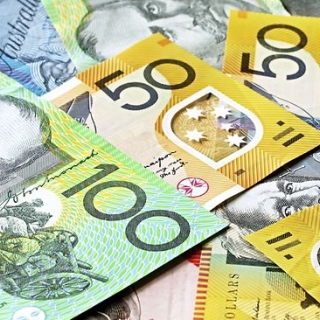


The Australian dollar (AUD) held steady against the US dollar (USD) on Thursday (23/1), as market concerns eased following news that China-specific tariffs proposed under US President Donald Trump's revised plan were much smaller than previously expected. The development helped calm investor nerves, especially given the strong trade ties between China and Australia, which make the Australian market sensitive to changes in China's economic landscape.
President Trump announced plans to impose 10% tariffs on Chinese imports from February 1, citing concerns over fentanyl shipments from China to Mexico and Canada, according to Reuters. In response, Chinese Vice Premier Ding Xuexiang warned on Tuesday of the potential impact of a trade war, saying that there are "no winners" in such a conflict. His remarks came as China braced for possible tariffs under the Trump administration, as reported by CNBC.
Chinese authorities on Thursday introduced several measures to stabilize its stock market, including allowing pension funds to increase investments in domestic equities. A pilot scheme allowing insurers to buy equity will be launched in the first half of 2025, with an initial scale of at least 100 billion yuan. Meanwhile, the People's Bank of China (PBOC) said it "will expand the scope and scale of liquidity tools to fund equity purchases at an appropriate time." The S&P/ASX 200 index fell to near 8,400 on Thursday, driven mainly by a decline in mining stocks as weaker commodity prices weighed on the sector. The decline in Australian equities came despite strong gains on Wall Street. Investors remained cautious as they assessed the implications of President Trump's policy shift. (AL)
Source: FXstreet
AUD/USD firms as traders brace for Australia Q3 inflation data and Fed decision The Australian Dollar (AUD) edges higher against the US Dollar (USD) on Tuesday, extending its winning streak for the f...
The Australian dollar (AUD) rose to around $0.656 on Tuesday, its highest level in nearly three weeks. This increase was primarily due to the weakening US dollar (greenback). US market participants aw...
The Australian dollar strengthened against the US dollar on Wednesday, recouping the previous session's losses. This boost came from comments by RBA Assistant Governor Sarah Hunter: recent data appear...
The Australian dollar (AUD) strengthened to around 0.6530 against the US dollar (USD) in the Asian session on Monday, after falling more than 1% in the previous trading session. This strengthening occ...
The Australian dollar strengthened to around $0.657 on Friday (October 10), rebounding from a nearly two-week low. This gain came after RBA Governor Michele Bullock struck a cautious tone: services in...
The Federal Reserve lowered the federal funds rate by 25 bps to a target range of 3.75%–4.00% at its October 2025 meeting, in line with market expectations. The move followed a similar cut in September, bringing borrowing costs to their lowest...
The US dollar moved steadily, tending to strengthen slightly on Wednesday, October 29, 2025, after briefly touching its weakest level in about a week. The dollar index (DXY), which measures the greenback's strength against six major currencies, was...
The United States (US) Federal Reserve (Fed) will announce its interest rate decision and publish the Monetary Policy Statement following the October policy meeting on Wednesday. Market participants widely anticipate the US central bank to cut the...
 Asian stock markets opened higher on Wednesday (October 29th), buoyed by positive sentiment from Wall Street. Investors are confident that the...
Asian stock markets opened higher on Wednesday (October 29th), buoyed by positive sentiment from Wall Street. Investors are confident that the...
 The European session on Tuesday, October 28, 2025, opened on a more cautious note. After consecutive rallies and a new record on the STOXX 600...
The European session on Tuesday, October 28, 2025, opened on a more cautious note. After consecutive rallies and a new record on the STOXX 600...
 European stocks continued to strengthen on Monday, October 27, 2025, as markets grew more confident after the US and China announced they had a...
European stocks continued to strengthen on Monday, October 27, 2025, as markets grew more confident after the US and China announced they had a...
 Federal Reserve policymakers are widely expected to reduce U.S. short-term borrowing costs this week by a quarter of a percentage point for the...
Federal Reserve policymakers are widely expected to reduce U.S. short-term borrowing costs this week by a quarter of a percentage point for the...